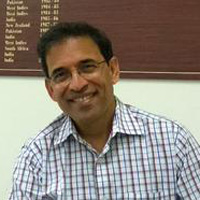Opinion First signs of a defining change: T20 stars break into Test teams
Its not loud enough to be an explosion,more like a little rumble. Its not bright enough to be a beacon,more like a little firefly.
It’s not loud enough to be an explosion,more like a little rumble. It’s not bright enough to be a beacon,more like a little firefly. But it is there. The first generation of players who used twenty overs cricket as a platform to showcase themselves have started breaking into test teams. And it has taken less than five years. I’m not saying it’s a trend,there aren’t enough points on the graph yet to make that kind of projection,but let’s face it,we thumbed our noses at T20 but there is more to the kid than we care to see.
This week,David Warner played his first test match for Australia after being labelled a slogger early in his career. There were enough people who understood the game who said Warner had it in him to adapt to test matches but few took him seriously and he has admitted he thought that was the kind of player he might be. But Warner has now scored back to back hundreds in T20 and has produced an eight hour innings. There is food for thought there.
 Meanwhile Ravichandran Ashwin has taken 22 wickets in his first three tests and has produced a solid test match hundred. Yes he did play Ranji Trophy cricket for Tamil Nadu,yes he has 130 first class wickets but it was the composure he showed with the new ball playing for Chennai Super Kings that separated him from the other challengers. Like with Warner,his success in twenty overs cricket was proclaimed as a reason why he may not be able to play longer cricket. But he can bowl long spells,bat for long periods and,ironically,his only weakness at the moment is that he isn’t athletic enough,one of the factors considered mandatory for twenty overs cricket!
Meanwhile Ravichandran Ashwin has taken 22 wickets in his first three tests and has produced a solid test match hundred. Yes he did play Ranji Trophy cricket for Tamil Nadu,yes he has 130 first class wickets but it was the composure he showed with the new ball playing for Chennai Super Kings that separated him from the other challengers. Like with Warner,his success in twenty overs cricket was proclaimed as a reason why he may not be able to play longer cricket. But he can bowl long spells,bat for long periods and,ironically,his only weakness at the moment is that he isn’t athletic enough,one of the factors considered mandatory for twenty overs cricket!
Maybe sometimes,like bad scientists,we generate our hypothesis first and then go searching for observations. Instead,if like good researchers,we merely noted observations and looked for patterns therein to frame a hypothesis,we might look at the world differently. We might arrive at the same conclusion,we might still find that Warner and Ashwin are exceptions,but we need to assess before we condemn. Why,look at common parlance about T20 and test cricket.Can a player come down to T20,we ask. Can he move up to test cricket,we wonder.
Either way,it’s about adapting your game. Fine feature film directors have made excellent 30 sec commercials,the great AR Rahman was first spotted as a young man composing jingles. By the same token I know of a sensitive film maker whose opening shot for an ad film was a slow 30 second sweep. And we now know that masters of the throwaway one-liner can come a cropper when asked to be part of a two hour story. So it can work both ways; one is not only bad and the other not only good.
Vehicle to get noticed
What is increasingly unmistakable though is that T20,because of its popular appeal,is becoming a vehicle to get noticed. Shane Watson’s return from injury was dramatically visible during his extraordinary first season with the Rajasthan Royals; Eoin Morgan’s unorthodox strokeplay caught the eye in limited overs cricket and Australia’s Callum Ferguson might well benefit from this visibility too as Ravindra Jadeja and Virat Kohli did.
Over the next couple of years it will be interesting to see how cricket society treats those that cannot adapt. Kieron Pollard and Suresh Raina have been magnificent in T20 (Raina is a fine one-day cricketer too) but have struggled to make an impact in Test cricket.
By the same token,Dale Steyn and Zaheer Khan in T20 are a fraction of the cricketers that they are in test cricket. And Dwayne Bravo is an example of a fine test cricketer in the making who,through injury but I suspect also through inclination,is now good enough consistently only in the shortest form.
I have often felt that in the years to come we,or later historians,will look back at this era as one of defining change. Those wisps of smoke we see might just be concealing a conflagration. On the other hand it might just be tiny embers. But we need to observe. And observe with an open mind.





